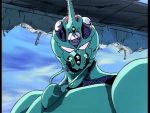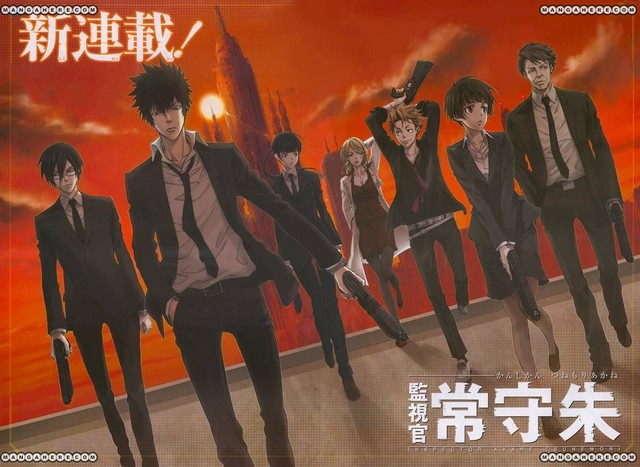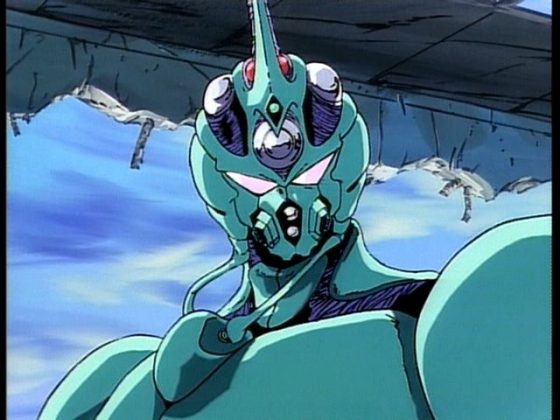

Dystopians are a branch of the post-Apocalyptic genre, but take it in a distinct direction. As opposed to taking place right after an Apocalypse where people are trying to survive, they take place when the world is on the road to recovery, or has already recovered but in a negative way. Pop culture tends to portray dystopias in two separate trends. One major trend is with cyberpunk where the government, or some powerful corporation, has absolute control and only the elite can live in comfort while the non-elites live in poverty with some resorting to a life of crime. Another trend is that the world has lost most forms of modern technology and has returned to a more primitive state. Either way, both roads explore the same themes as they relate to human nature, individual rights, and the pros and cons of capitalism vs socialism. For the past 30 years or so, anime has taken the opportunity to put its own spin on it, and we thought it’d be nice to explore different types of dystopian anime.
Hokuto no Ken (Fist of the North Star / Lawless Lands)
In what can be considered one of the earliest examples of dystopian anime is the classic action series, Hokuto no Ken. It depicts a world gone to Hell after nuclear war. The lands are devastated with little to no plant life, lack of food and water, and with no nations left to govern, people live in fear of of thugs who loot and plunder. With no law enforcement or military, innocents are mercilessly getting slaughtered as they’re doing their best to rebuild their lives. While we have previously shared that a majority of dystopian media tend to portray corporations and corrupt governments taking control, in Hokuto no Ken, the only law of this world is that only the strong survive, which tends to take its influence from martial arts and Mad Max movies.
Psycho-Pass
In context to dystopia in cyberpunk, one great example is Psycho-Pass, which takes inspiration from the writings of Philip K. Dick, whose works would influence movies such as Blade Runner, Total Recall, and The Minority Report. Taking place in the far future, the buildings of Tokyo may have bright signs, but the outer walls look as if they’ve been tainted by smog, a common technique in cyberpunk to emphasize the gritty setting. Beyond this, we see a well-intended but morally questionable Japanese police force as they use the Sybil System, something akin to Pre-Cog in The Minority Report, in order to prevent crime. Since the Sybil System relies on “possibilities of committing a crime” due to scanning a person’s emotional state, audiences can see an example as to how in Dystopian societies, the rights of the individual to think and have feelings tend to be stripped in order to maintain security, a common theme in cyberpunk dystopia.
7 SEEDS
In the recent Netflix series based on the hit manga by Yumi Tamura, 7 SEEDS takes the dystopian theme to a level where mankind has to restart from its primitive roots, but of course, not without some help. If our math is correct, our main characters who were frozen probably asleep for at least tens of thousands years or so in order to pass the ice age that came after the meteor shower, the event that led to their slumber. Selected individuals throughout Japan have finally awaken from their cryogenic slumber and with their natural skills and talents, they have to re-build the world. For one group, the Autumn Team, who were awaken three years prior to the majority of our heroes, have already established a community/society with their huts and agriculture, but not without their own strict set of rules. This leads to Ran and Akio, two members of the Autumn Team who take over and rule the team by treating the team as slaves. They make them work specific tasks and to make daily quotas. While this is more of a primitive example of a dystopia, you see how this environment creates an only the strong survive kind of mentality. You then see how the rest of the members of the group are only treated for what they are tasked to do, and not as individuals. Plus, Ran and Akio have also implemented strict rules such as no engaging in sexual activity in order to prevent having children, as their way of giving the proverbial middle finger to those that put them in their situations.
Corporate Rule in Guyver
Last, if there is another form of dystopian that needs to be explored, it is with how society is hijacked by greedy corporations. If there’s any anime that best exemplifies this, it is with Guyver, based on the manga by Yoshiki Takaya. Initially, you think that Cronos, the corporation responsible for making the monsters, want to take over the world by fear. However, thanks to their long-term strategy, they were able to take over the world by the end of the series and convince them that turning into a monster wasn’t bad! In a corporate run world, you see that despite convincing people that they can be happy, they’re still nothing more than livestock.
Final Thoughts

When the world faces a crisis where nations or humanity as a whole has to start over, it can go a good number of ways. If we still maintain technology as we do now, then whoever takes initiative in rebuilding society can use that technology to establish order, but not for the greater good. It can be a government, or a corporation. In some instances, whatever causes a calamity may wipe out technology and humanity has to restart from its roots. Either way, people have to come together to find a solution in order to keep moving forward and this is what dystopian media, especially anime, does best at portraying.
Add Comments